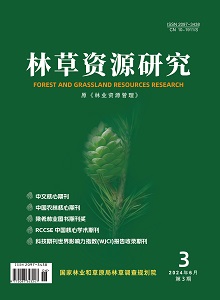Evaluation of Potential Habitat for White-headed Langur Based on WEB Dataset and Maxent Model
LI Mingyang, XI Qing, XU Haigen
2010,(4):
31-36.
 Asbtract
(
197 )
Asbtract
(
197 )
 PDF (440KB)
(
244
)
References |
Related Articles |
Metrics
PDF (440KB)
(
244
)
References |
Related Articles |
Metrics
White-headed langur Trachypithecus leucocephalus is an indigenous species in Guangxi,China,belonging to the first class protection list of wild animals in China.Knowing the information of its spatial distribution and enforcing environmental factors is the precondition of protection policy-making.93 footprint points with GPS coordinates between 2007 and 2008 and 63 environmental variables from open WEB datasets were gathered to generate maximum entropy method (Maxent)model.After the prediction result of Maxent model was produced,reclassification of the result based on expert knowledge was done,followed by over-layering of raster layers of distance to road,distance to farmland,distance to residence,historical distribution data and the reclassification result.Results showed that potential annual direct incident radiation (radiation,46.1%), precipitation of wettest quarter (bio16,19.2%),mean diurnal range (bio2,9.8%),distance to water (dist_water,7%),minimum temperature of coldest month (bio6,6.9%)and soil pH soilph,4%)were the six enforcing environmental factors impacting the spatial distribution of the langur.The area of the most suitable,suitable,unsuitable habitats was 112.60km2,78.92km2 and 17056.13km2 respectively.Compared with distribution area in 60th,80th,90th of the last century,the most suitable and suitable area has been decreased by 65%,50%,9.5% respectively. Suggestions on enhancing education on wild animal protection,furthering the research on the behavior of endangered species,advancing the step of ecological emigrant from nuclear distribution area,establishing more nature reserves were put forward as the main protection measures.

